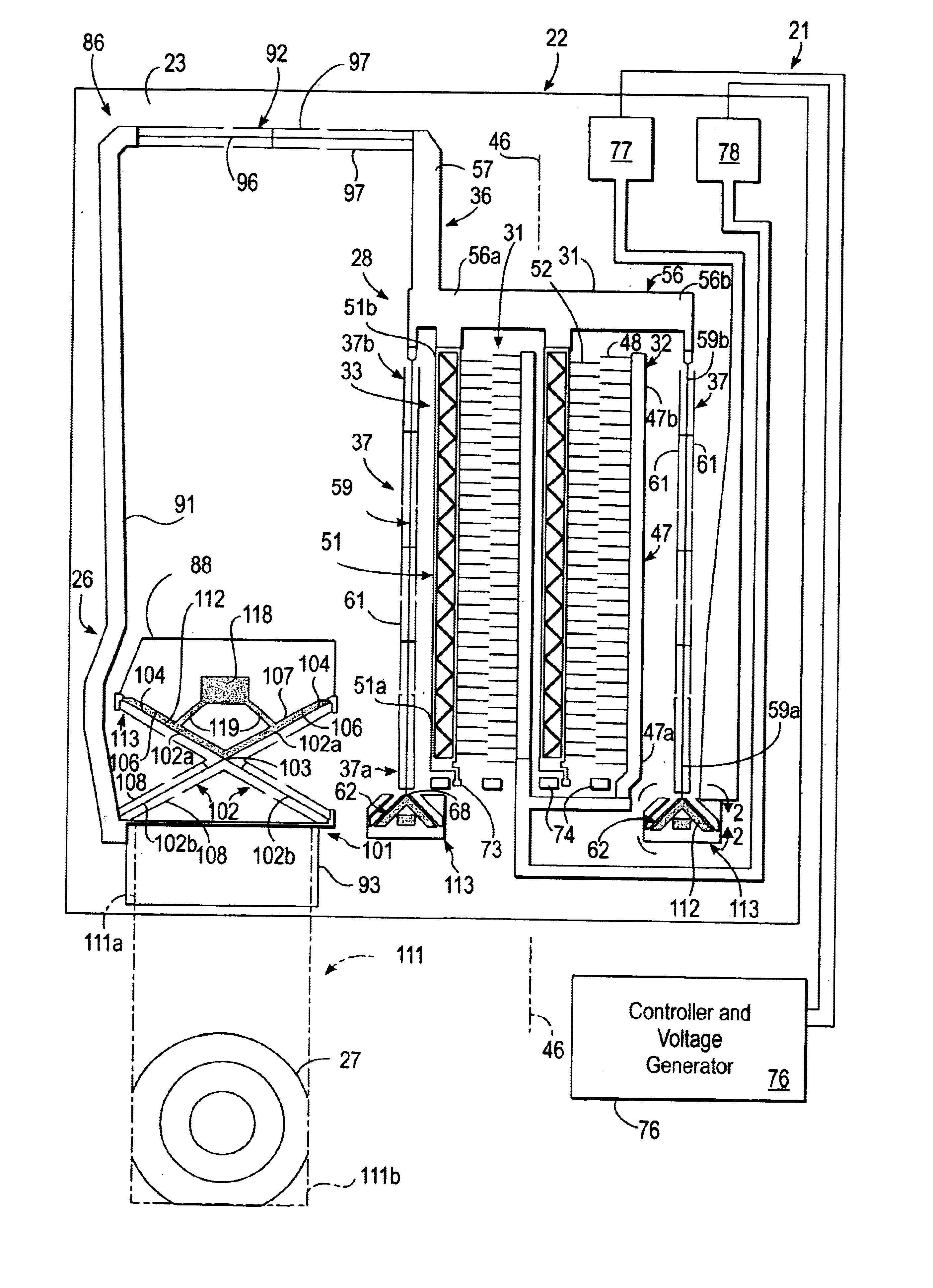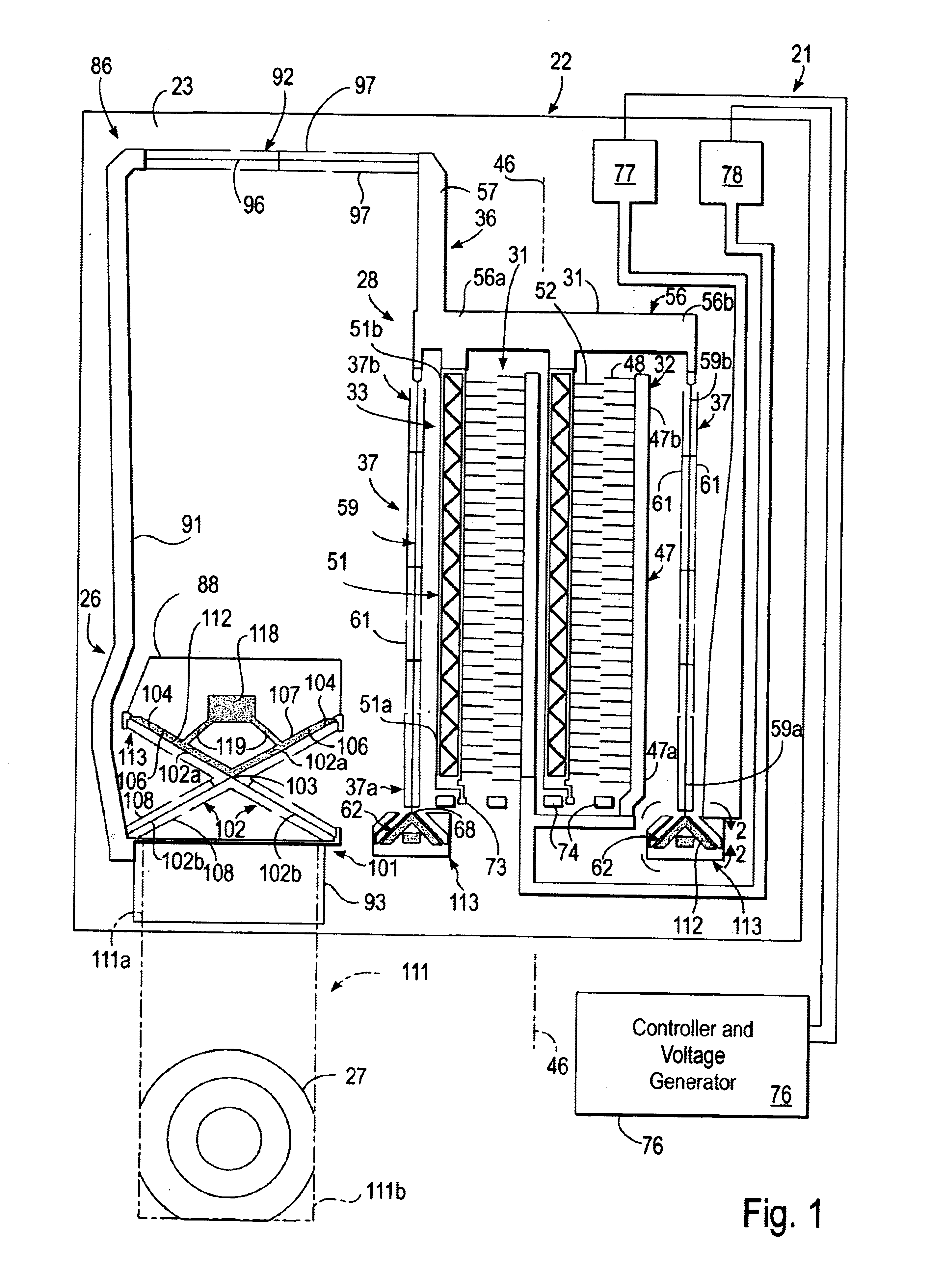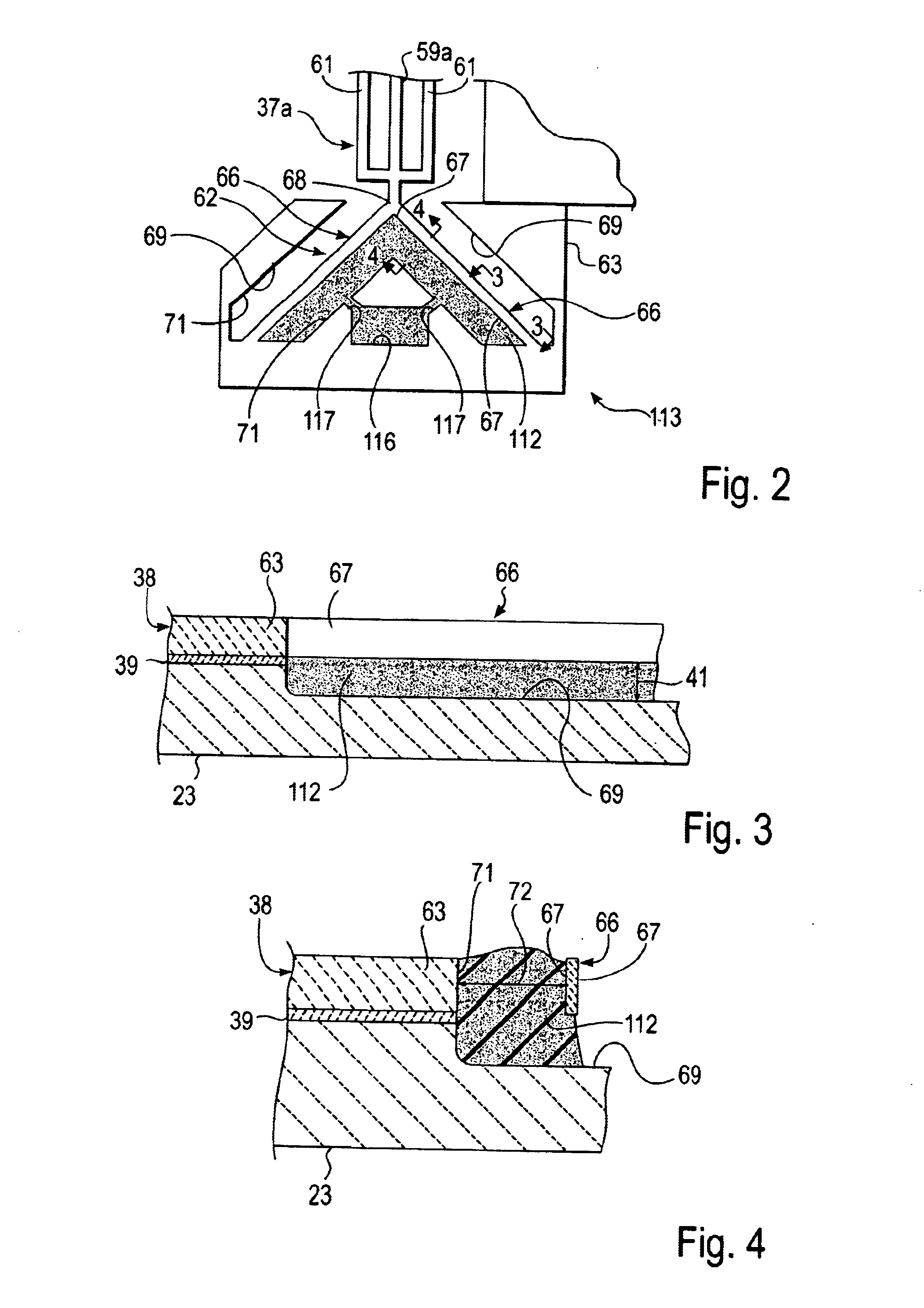Damped micromechanical device
a micromechanical device and damping technology, applied in the direction of generator/motor, acceleration measurement using interia forces, instruments, etc., can solve the problems of not providing damping in air, being susceptible to external vibration or shock, and limiting attempts to control damping of such devices, so as to limit mechanical motion
- Summary
- Abstract
- Description
- Claims
- Application Information
AI Technical Summary
Benefits of technology
Problems solved by technology
Method used
Image
Examples
Embodiment Construction
The micromechanical device of the present invention can be in the form of a lens adjuster 21, shown in FIG. 1, suitable for use in a tunable laser of the type disclosed in U.S. patent application Ser. No. 09 / 728,212 filed Nov. 29, 2000 (Our file number A-70056), the entire content of which is incorporated herein by this reference. In general, lens adjuster 21 includes a microactuator 22 formed on a substrate 23 and coupled to a lever assembly 26. A collimating lens 27 is carried by the lever assembly 26.
Microactuator 22 can be of any suitable type, such as an electromagnetic microactuator or any other electrically-driven microactuator, but is preferably an electrostatic microactuator. The microactuator 22 has similarities to the microactuators disclosed in U.S. Pat. No. 6,384,510 and U.S. Pat. No. 6,469,415, the entire content of each of which is incorporated herein by this reference. In this regard, microactuator 22 is formed on planar substrate 23 and has a movable structure 28 th...
PUM
 Login to View More
Login to View More Abstract
Description
Claims
Application Information
 Login to View More
Login to View More - R&D
- Intellectual Property
- Life Sciences
- Materials
- Tech Scout
- Unparalleled Data Quality
- Higher Quality Content
- 60% Fewer Hallucinations
Browse by: Latest US Patents, China's latest patents, Technical Efficacy Thesaurus, Application Domain, Technology Topic, Popular Technical Reports.
© 2025 PatSnap. All rights reserved.Legal|Privacy policy|Modern Slavery Act Transparency Statement|Sitemap|About US| Contact US: help@patsnap.com



